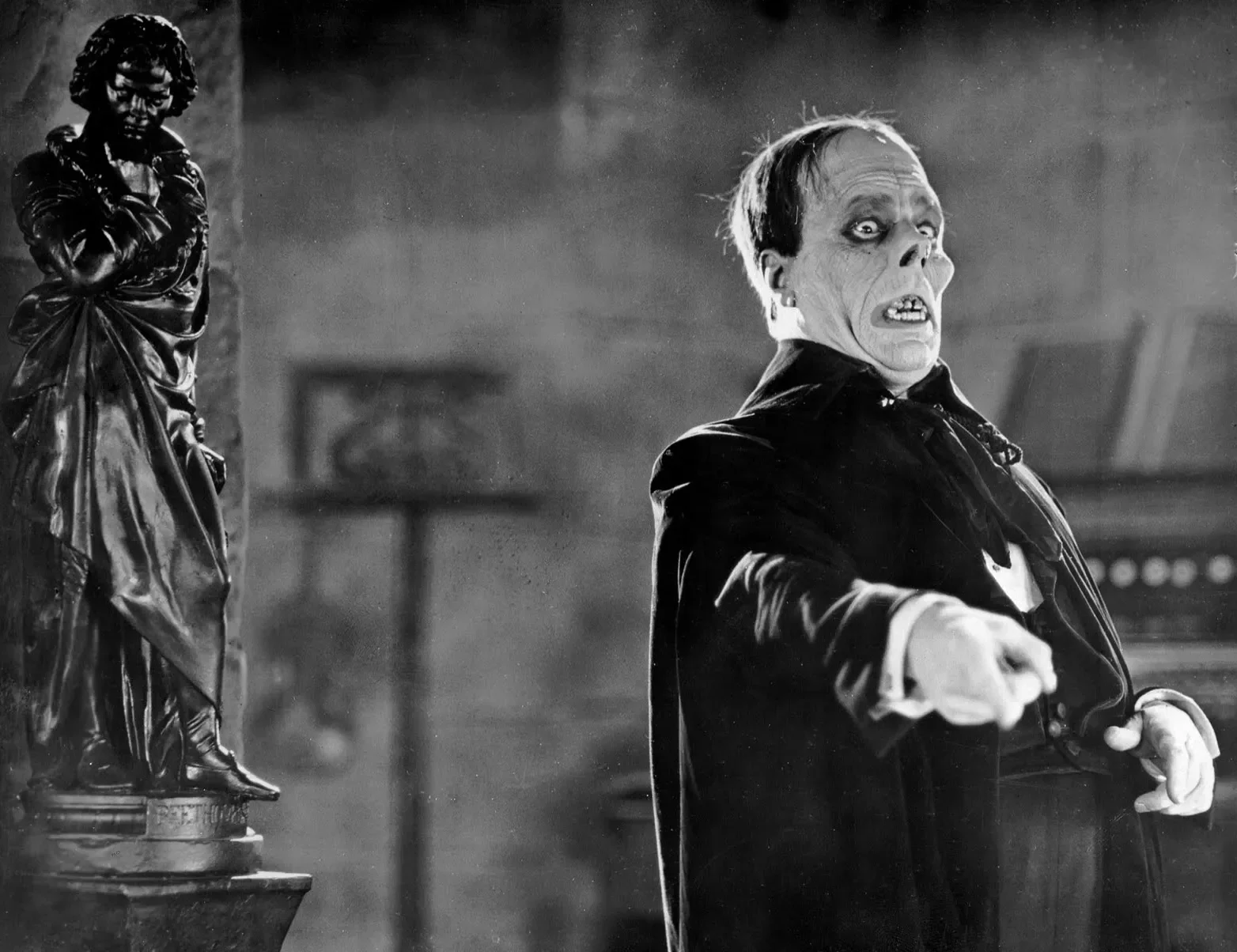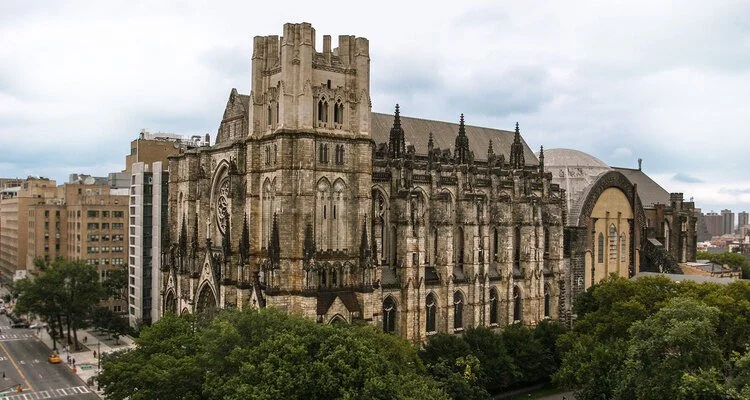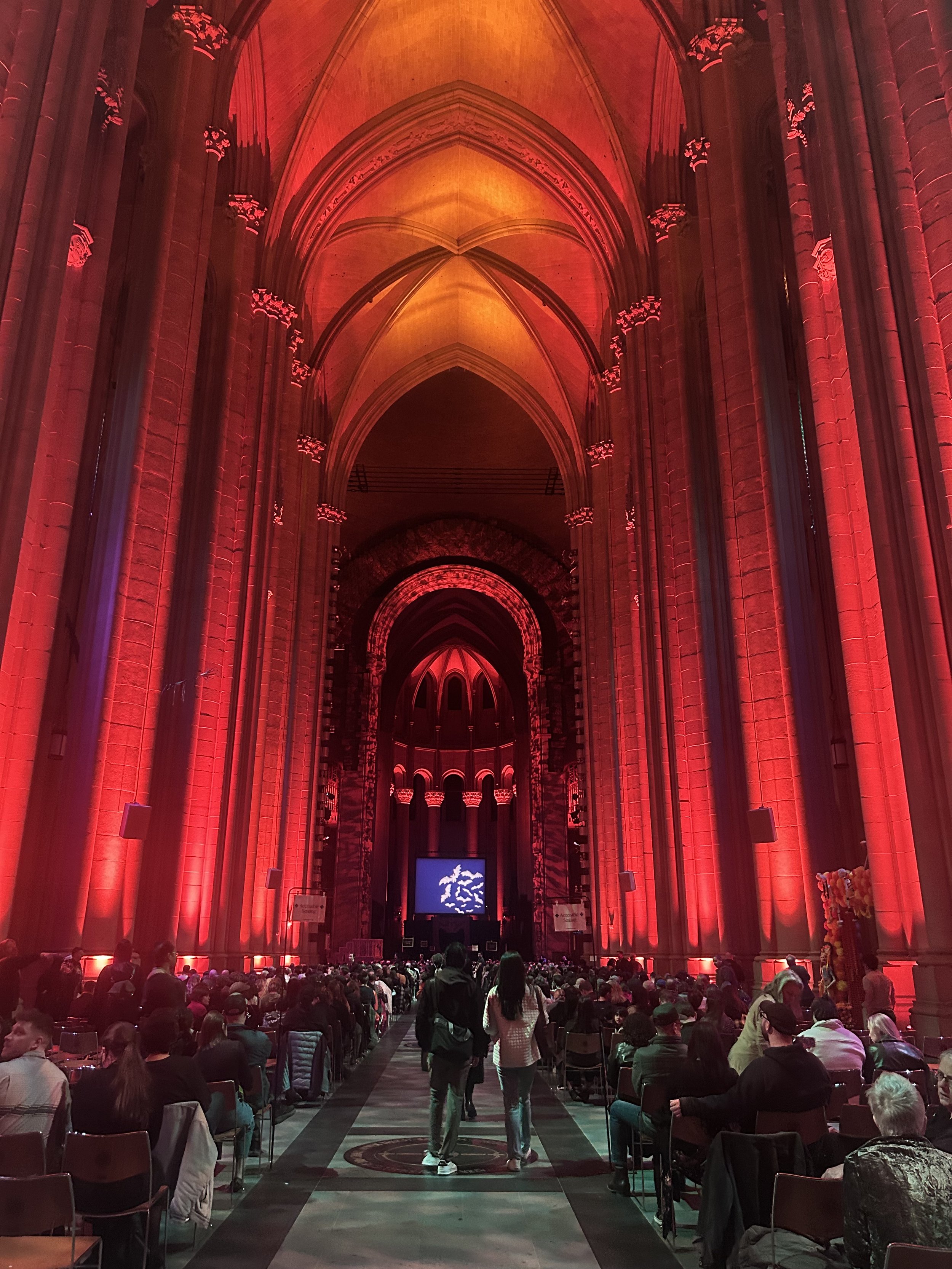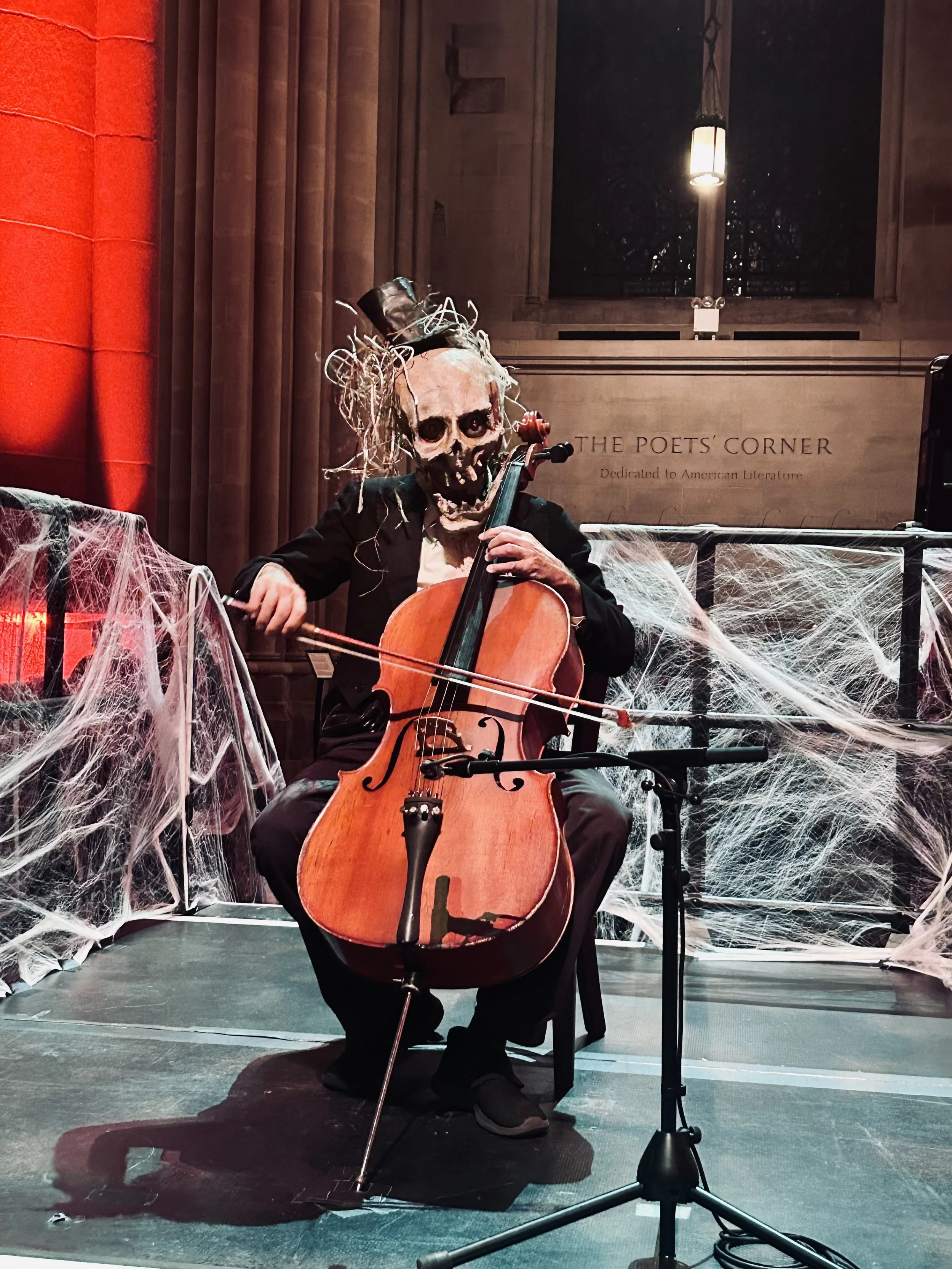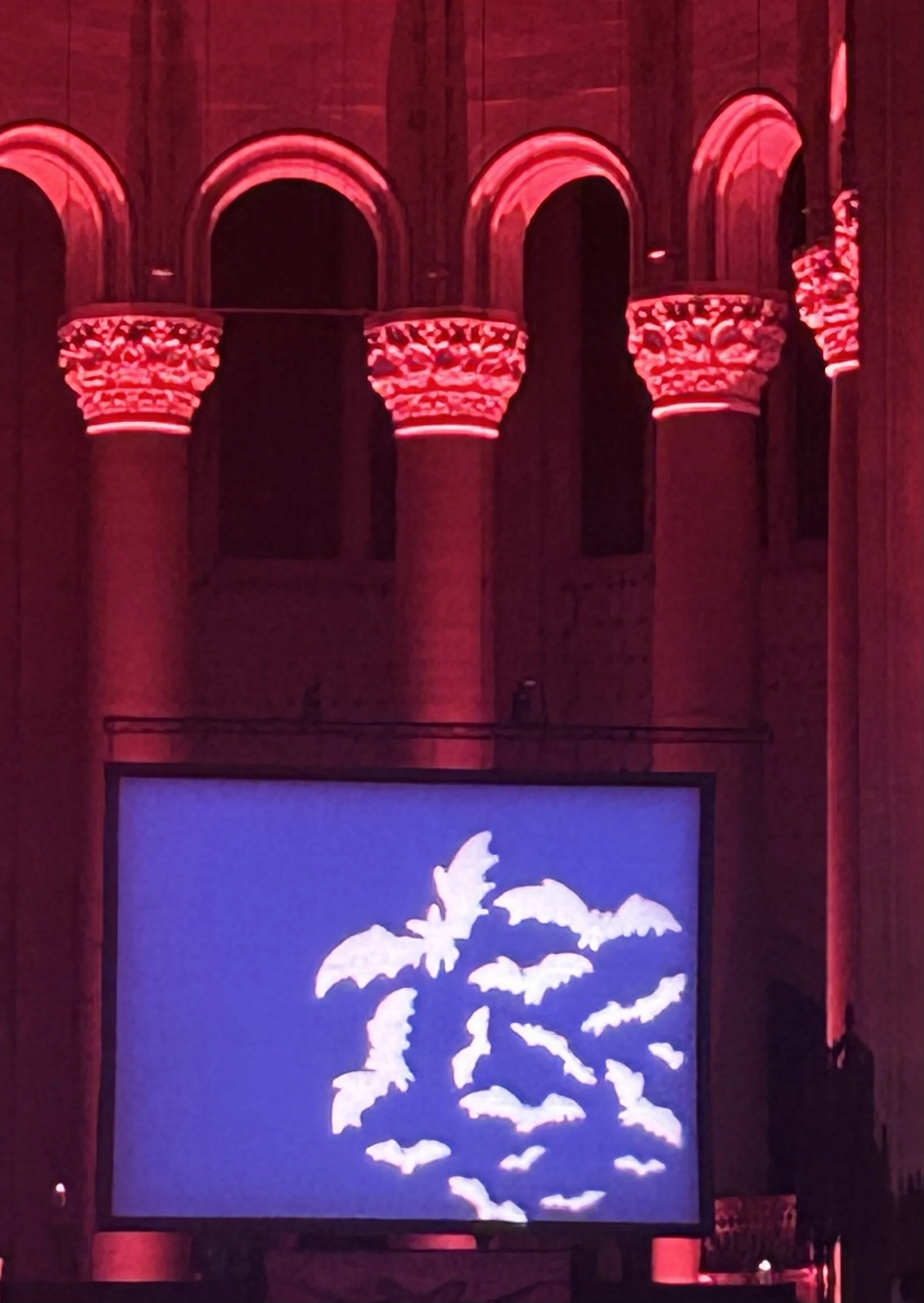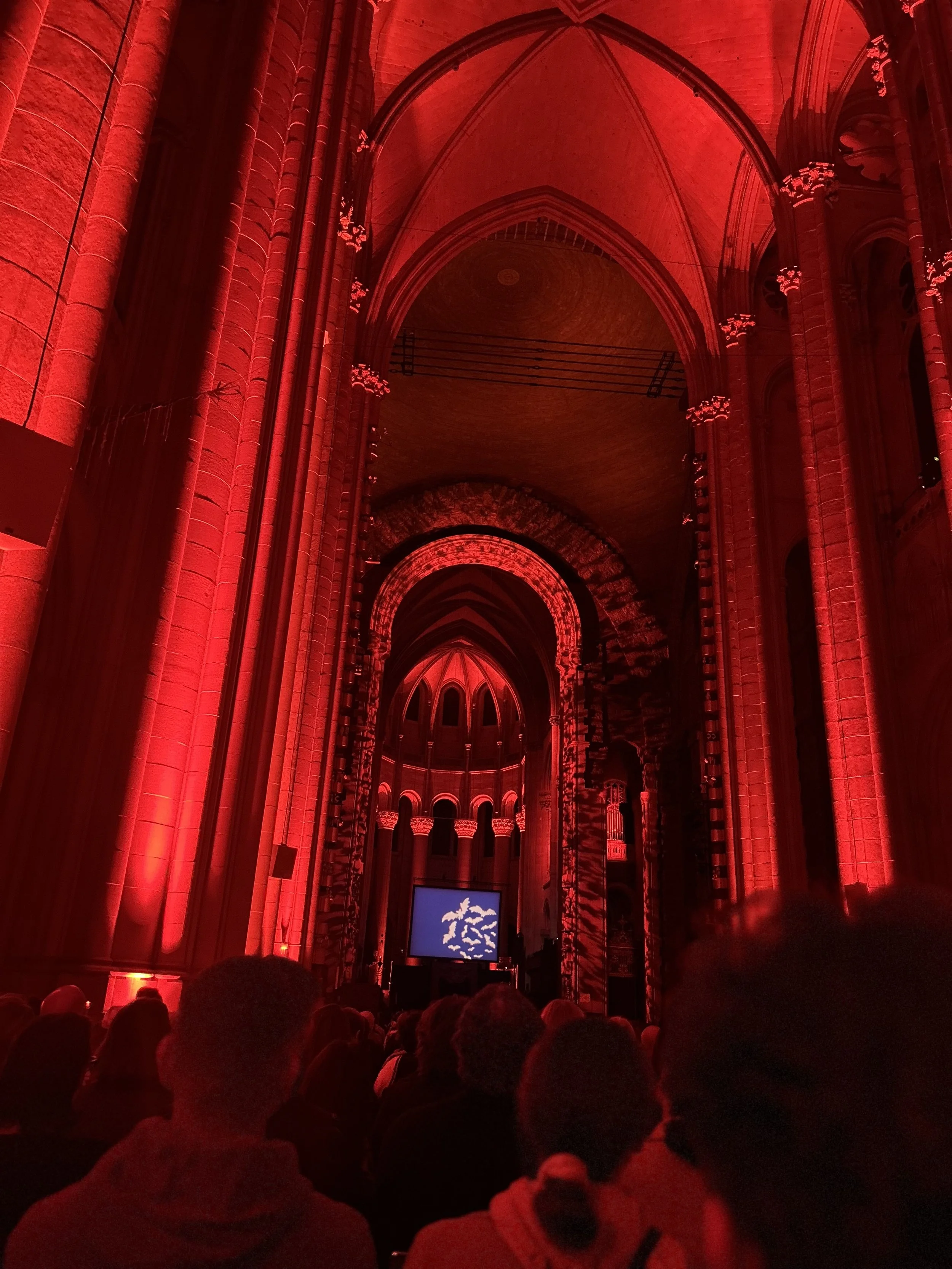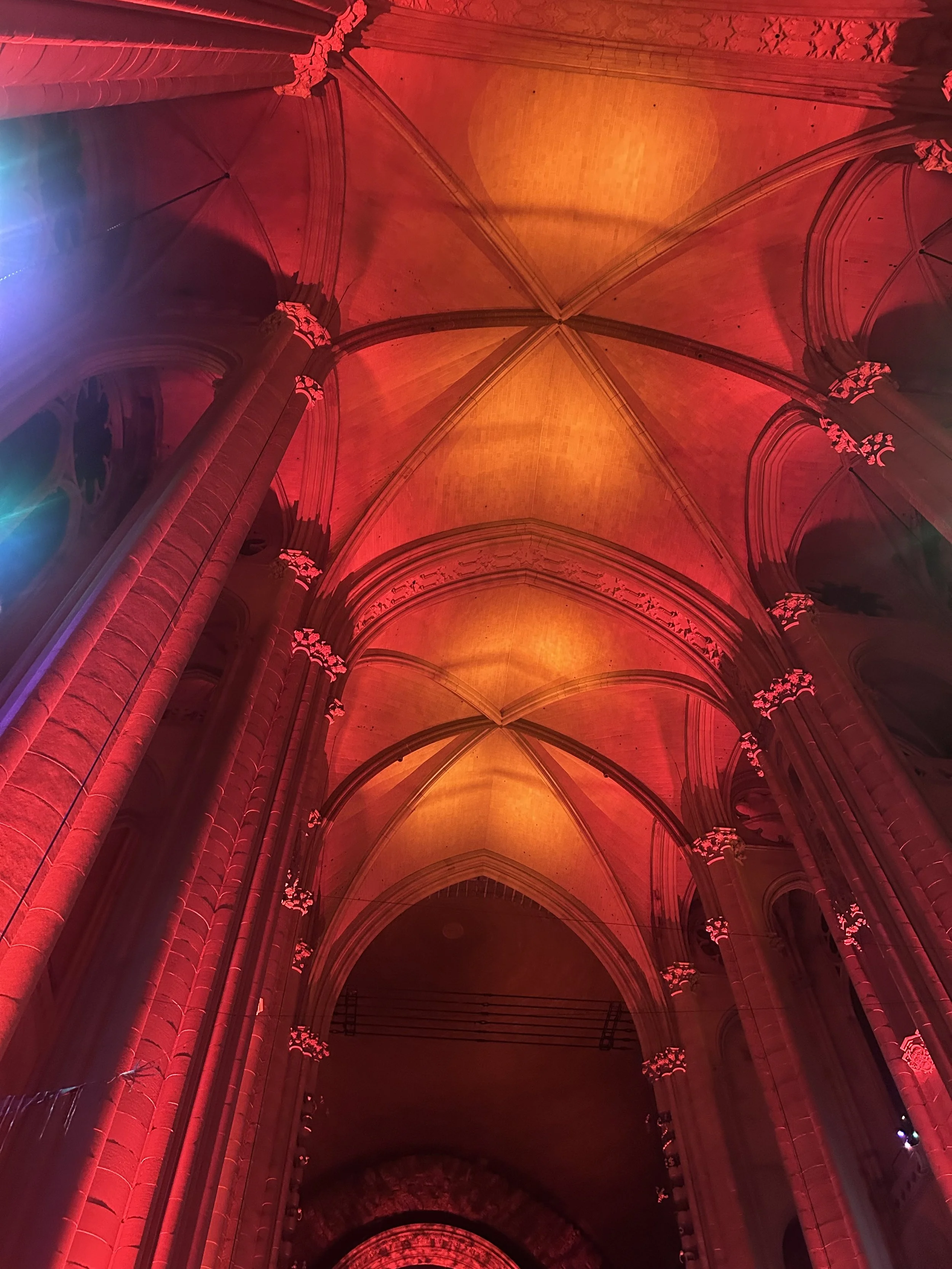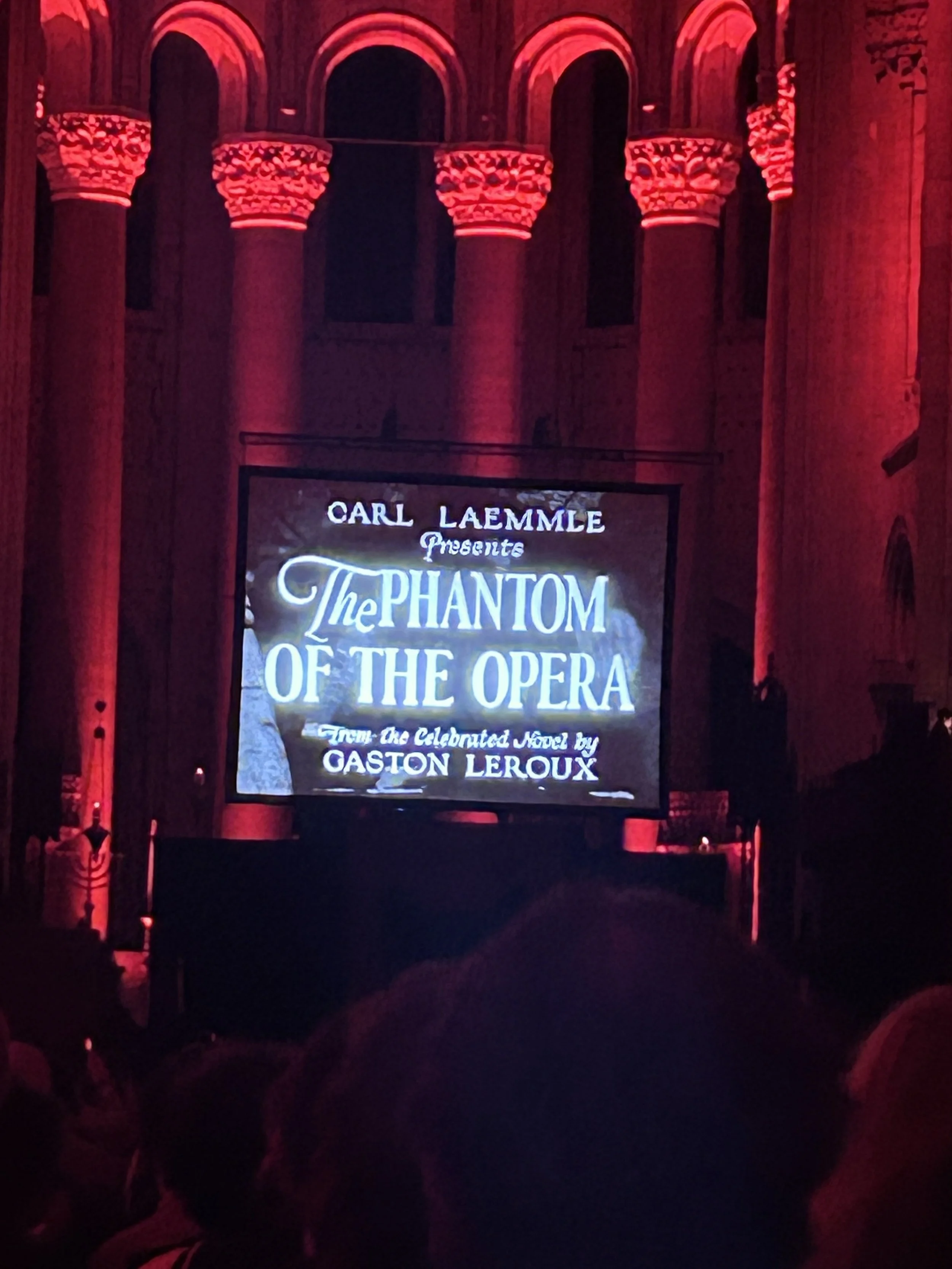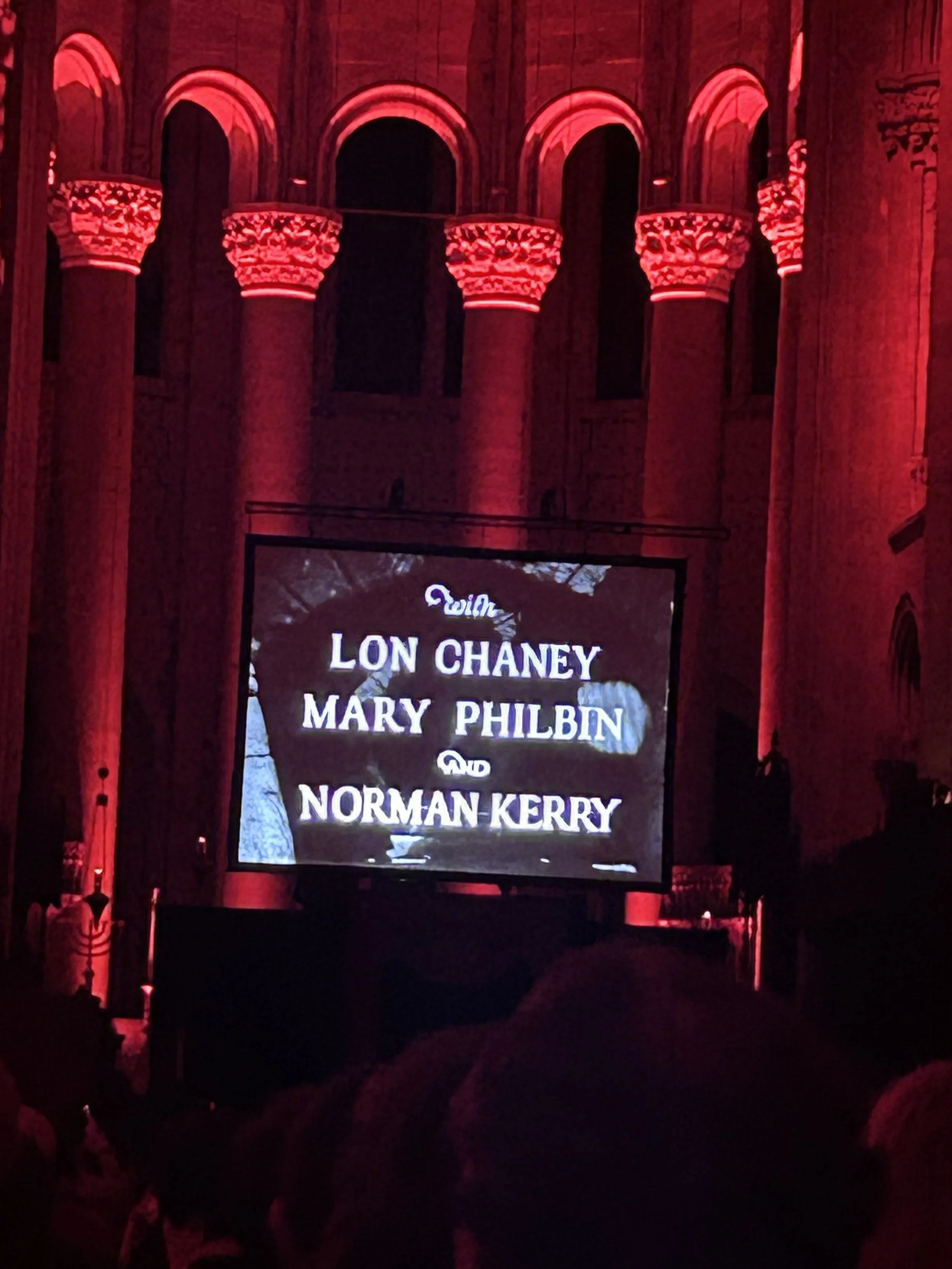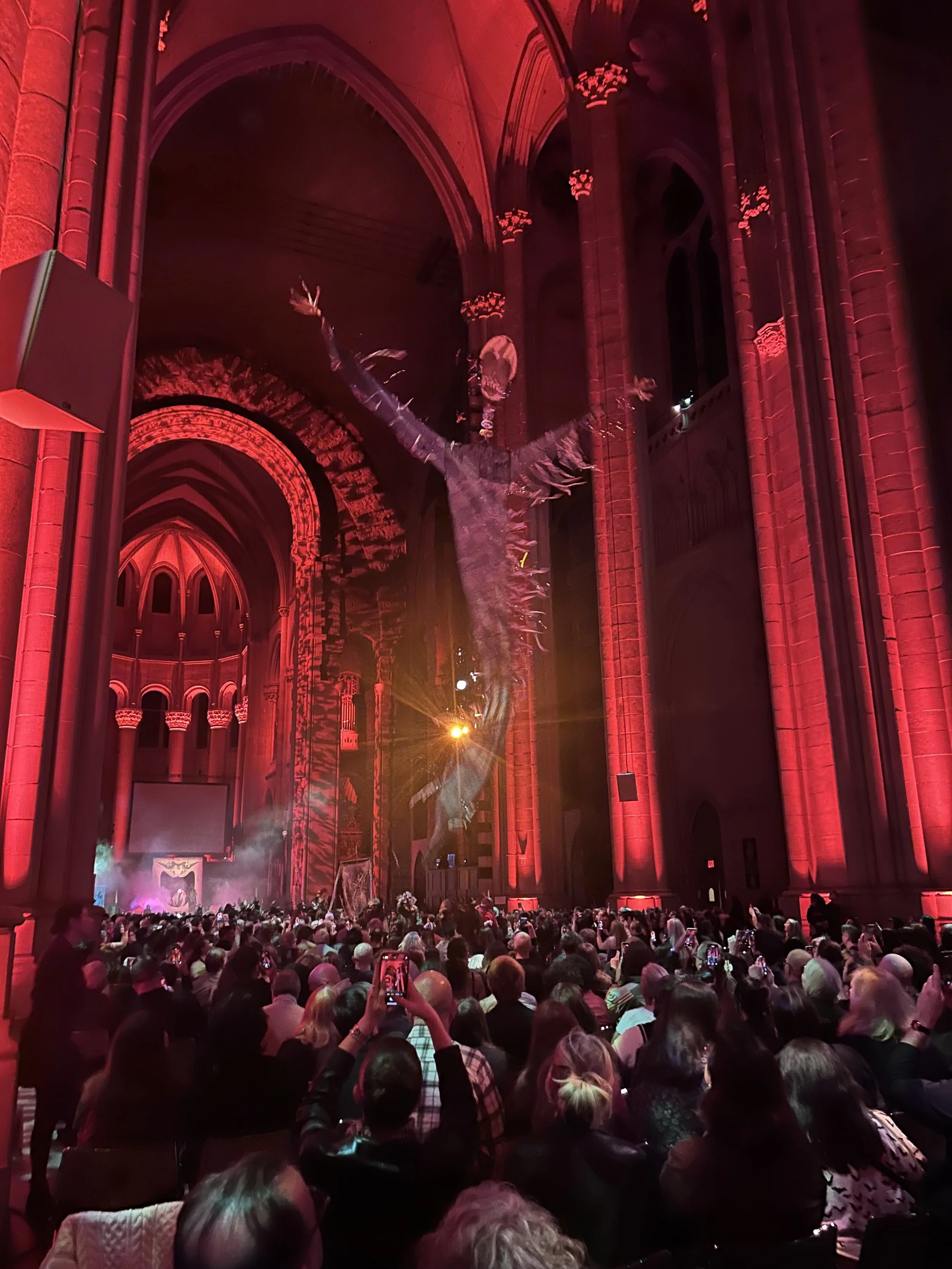A Phantom at the Cathedral
The penultimate stop on our musical horror tour through NYC took us to a historic and beautiful cathedral in upper Manhattan to celebrate the 100th anniversary of one of the great chillers of silent age cinema, The Phantom of the Opera (1925). The annual Halloween Extravaganza at the Cathedral of St. John the Divine includes two performances only and sells out fast; we were fortunate to snag tickets when they went on sale in early September. This event is advertised as one for families and children, so we were happy to attend with our seven-year-old daughter who, as a child of monster and horror movie fans, was eager and ready to take in all the spooky vibes. But first, a brief synopsis of the film du jour.
A big break
It is late 19th-century France, and the grand Paris Opera House is putting on a production of Faust. Young up-and-coming soprano Christine Daaé (Mary Philbin) is the understudy to diva extraordinaire Carlotta, who plays the character of Marguerite, an enticing role that can make one’s operatic career. As luck (or foul play) would have it, Christine’s day to shine comes sooner than she could have hoped for. The mysterious and masked titular “Phantom” has been mentoring and inspiring her to reach great artistic heights. Beyond standard vocal coaching, the Phantom’s various machinations to bring the young ingenue to stardom include threats, sabotage, and even murder of opera house management, cast, and crew—whatever it takes to get Christine that career-defining role.
Tor(mentor)
A victim of torture during France’s Second Revolution, the Phantom is a disfigured, embittered, and reclusive soul who exists in the shadows. He lives in the tunnels and cellars of the opera house where these tortures once took place. The Phantom yearns for his protégé’s love and devotion, with the misguided notion that winning Christine’s affection will somehow redeem his wicked ways. From behind her dressing room walls he speaks and sings to Christine in such a mesmerizing voice that she can’t help but be swept up in his promises of unrivaled artistry and stardom, so much so that she ignores all the glaring red flags. His lessons come with certain demands, namely that she spurn her suitor Raoul, Vicomte de Chagny (Norman Kerry) and renounce all worldly affairs.
We can already see that none of this going to end well. The Phantom and Christine finally meet and his attempts to woo her in his subterranean torture chamber turned bachelor pad fail spectacularly. What follows are a series of schemes, threats, ultimatums, and double crosses as Raoul and a somewhat cryptic investigator by the name of Ledoux (Arthur Edmund Carewe) make a desperate attempt to rescue Christine without running afoul of the Phantom’s tricks and deadly traps. But remember: always keep your hands at the level of your eyes . . .
My brief two cents
I will admit that I used to give this movie somewhat short shrift when accounting for silent horror cinema, especially in comparison to such celebrated genre classics as The Cabinet of Dr. Caligari (1920) and Nosferatu (1922). This is a pretty wonderful film that delivers the requisite chills, atmosphere, mystery, intrigue, and iconic mad villain brought to life by Chaney’s arresting performance. Chaney, a.k.a. “The man of a thousand faces” who is known for his incredible DIY makeup skills imbues the phantom with shame, pride, rage, remorse, a massive chip, and a twisted sense of entitlement. His performance does not get lost behind the makeup. And truly, we must talk about the makeup.
To achieve his iconic skeletal look Chaney dipped into his makeup bag of tricks. He raised the contours of his cheekbones with cotton and collodion, the latter a syrupy and highly flammable solution made up of pyroxylin mixed in alcohol that when dried can resemble scarred skin. To achieve the skull-like appearance Chaney flattened his ears to his head with some kind of adhesive and employed an embellished skullcap to elevate his forehead by several inches. A strip of fish skin attached to the nose with spirit gum was used to achieve the now-iconic raised nostrils. Simple pencil lines were used to accentuate the creases on his forehead and to implement the dark shading around the eyes, giving them a hollowed appearance. I think it is safe to say that these techniques yielded stunning results.
Of course one cannot talk about this film without mentioning a centerpiece of the production: a full-scale replica of the Paris Opera auditorium and stage. It was a massive undertaking, with a scale that must have employed hundreds of builders and craftsman. I won’t go into the details here but recommend checking out the American Cinematographer piece in the supplements to learn about the epic, and often fraught, production. Whatever the techniques the production design team utilized it is hard to argue with the results. Any given viewer is sure to revel in its gothic visuals, deep shadows, eerie tunnels, secret passageways, trap doors, and even an underground lake, which one must cross by boat to reach the Phantom’s lair.
If you are interested in learning more about this somewhat infamous Universal production and have the Shudder streaming service, I would recommend checking out the season seven premiere episode of the The Last Drive-In with Joe Bob Briggs. Briggs gives an excellent curated screening of The Phantom of the Opera in honor if its century anniversary.
On to the show . . . or should we say—extravaganza?
I should preface things by mentioning that this was actually our second time attending the Halloween Extravaganza. Our first experience was back in 2016, which featured a screening of the nightmarish, German Expressionist style silent film The Cabinet of Dr. Caligari. But we couldn’t wait to come back with our kiddo!
We attended the second show on October 25th at the stunning and pitch perfect Cathedral of Saint John the Divine, which is part of the Episcopal Diocese of New York. Located on Amsterdam Avenue and 112th Street, St. John’s is known for its rich history, inclusiveness, diverse collection of worshippers, eclectic programming, and gorgeous Gothic revival architecture. I have attended two other events at St. John’s some years back, including a friend’s wedding inside one of its intimate chapels and an appearance by the venerable Vietnamese Buddhist Monk Thích Nhất Hanh, a beloved poet, teacher, and peace activist.
Halloween vibes kicked in the moment we entered the cathedral, its gothic architecture bathed in deep orange lighting and some mood setting music performed by a cellist clad in a black suit and skull mask. The screening featured live accompaniment by Tim Brumfield, who played the cathedral’s Great Organ built in 1910 and rebuilt in 1954. You can learn about the organ, including its cleaning and restoration after fires in 2001 and 2019, here.
Brumfield’s performance was expertly calibrated to accentuate moments of hushed suspense, high drama, and excitement without overpowering the action on screen. This was in keeping with tradition as silent films of the era were often meant to have musical scores played live by organists, pianists, and the occasional orchestra. Unfortunately, the original score for the 1925 film composed by Joseph Carl Breil is now lost. However, in subsequent years several composers have created music for the film, with various musicians performing at screenings throughout the decades.
Brumfield is a conductor, pianist, organist, and composer in high demand performing across the U.S. and around the world. He also lectures on the art of musical improvisation and has collaborated with various artists in his career. These collaborations have encompassed several musical genres, including jazz, folk, and classical, in addition to silent film scores for The Cabinet of Dr. Caligari, Nosferatu, and of course Phantom of the Opera. He has been a member of the Grammy Award winning Paul Winter Consort since 1998.
The screening itself was wonderful. Silent images flickered across the screen in the dimly lit cathedral, which has a resonant stillness of its own that couldn’t be more atmospheric. My only complaint has to do with the size of the screen, which is a tad too small considering the the scale of the space.
The Procession of the Ghouls
Following a brief pause at the end of screening, a motley assortment of ghouls, goblins, and ghosts emerged from a gaping fog-shrouded mouth at the front of the cathedral and made their way slowly up the center aisle. This troupe of playful, colorful, and mischievous creatures, provided by the Mettawee River Theater Company (MRTC), was clearly in its element. Its members danced, shuffled, and gesticulated with great theatricality, never passing up an opportunity to interact with the audience—it is hard to say which group was having more fun! Yassmeen mixed it up with a ghoul or two, even engaging in a interpretive dance-off with one. Our daughter, for her part, was mesmerized, giddy, and giggling throughout the spooky festivities, even posing with a handful of goblins who were more than happy to oblige. One cannot do justice to this performance in simply writing about it, so check out the videos below for the full effect.
The MRTC has been performing at the Halloween Extravaganza at St. John’s for many years. The company was founded in 1975 by graduates of Vermont’s Bennington College who had a mission to bring theater to rural areas of upstate New York and New England. Their productions are based on creation myths, trickster tales, Sufi stories, legends, and folklore from a variety of cultures. The majority of their productions are held outdoors in public parks, lawns, fields, and town greens. They often incorporate masks, puppetry, visual effects, and live music. Learn more about the imaginative work of MRTC here.
Did you know
The Phantom of the Opera is based on the gothic horror novel by French author Gaston Leroux.
In 1998, the film was selected by the Library of Congress for preservation in the National Film Registry for being "culturally, historically or aesthetically significant."
Turner Classic Movies’ (TCM) website includes some interesting trivia relevant to the 1929 reworking of the film:
The Phantom of the Opera was re-released in sound in 1929 using Vitaphone/Western Electric sounds disks. 40% of the film was re-shot in synchronous sound and the rest had a music/soundtrack added or was dubbed over. The Kino Lorber edition (and all except for a few) is a silent version of the 1929 cut, a common practice at the time for theaters that did not have sound systems installed.
The print restored by the Kino company is a 1929 re-release version that was re-edited, eliminating some scenes and inserting new material shot after the 1925 version was finished. These included a sound sequence with opera star Mary Fabian singing in the role of Carlotta. In the re-edited version, Virginia Pearson, who played Carlotta in the silent 1925 version, is credited and referred to as "Carlotta's Mother" instead.
The very unique, boat-shaped bed seen in the Phantom’s lair was later re-used in the 1950 film Sunset Boulevard, serving as Norma Desmond’s bed .
Universal Pictures kept images and descriptions of Chaney’s Phantom secret from the public, and published nothing in newspapers and magazines to maximize its impact at the film’s premiere.
The 1925 version of The Phantom of the Opera is in the public domain, which means it’s not restricted by copyright.
Actor Gregory Peck's earliest movie memory is of being so scared by The Phantom Of The Opera at age nine that his grandmother allowed him to sleep in the bed with her that night.
Lobby cards
How did I watch?
Kino Lorber bluray, live screening at the Cathedral of St. John the Divine, and streaming
on Shudder
Cast (abridged)
Lon Chaney – The Phantom
Mary Philbin – Christine Daaé
Norman Kerry – Raoul, Vicomte de Chagny
Arthur Edmund Carewe – Ledoux
Gibson Gowland – Gibson Gowland
John Sainpolis – Comte Philip de Chagny
Snitz Edwards – Florine Papillion
Virginia Pearson – Carlotta
Crew (abridged)
Director - Rupert Julian
Screenplay - Elliott J. Clawson (Based on the novel by Gaston Leroux)
Cinematography - Milton Bridenbecker, Virgil Miller, Charles Van Enger
Art Direction - Ben Carre, Charles D. Hall
Producer - Carl Laemmle
Production Company - Universal Pictures
Running time: 1h 32m
Artwork for Kino Lorber restoration/bluray release
Recommendations Based on Phantom of the Opera-
The Hunchback of Notre Dame (1923)
Mad Love (1935)
Phantom of the Opera (1943)
Supplements-
The Phantom of the Opera: A Silent Era Masterpiece (American Cinematographer)
Why Hollywood’s First Iconic Phantom of the Opera Film is Still Puzzling us, 100 years On (The Conversation)
13 Best ‘Phantom of the Opera’ Movies Ranked (Collider)









